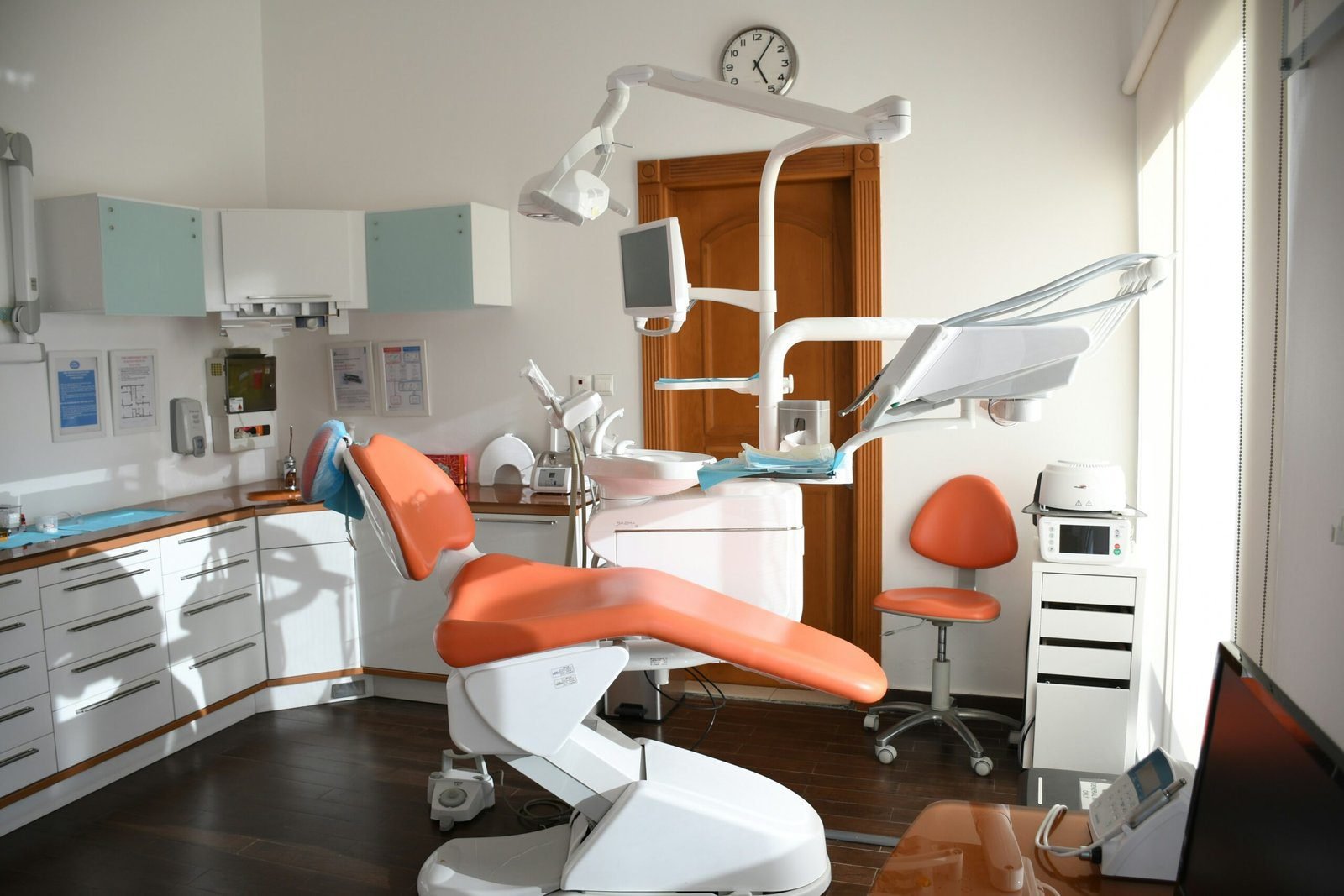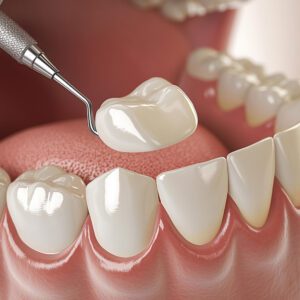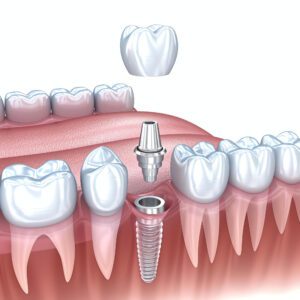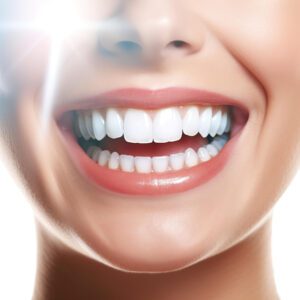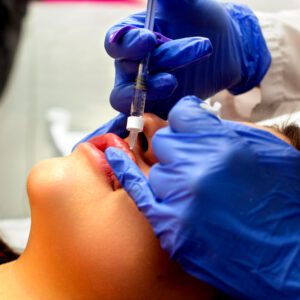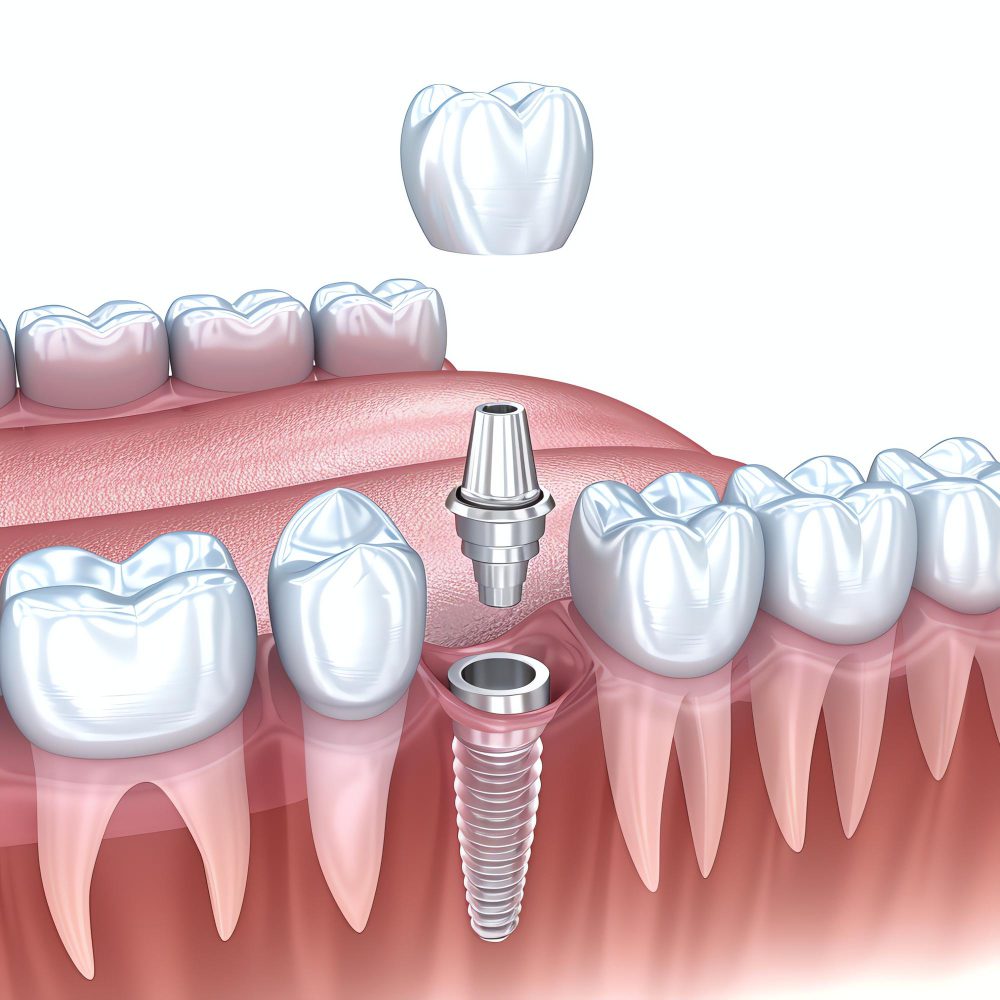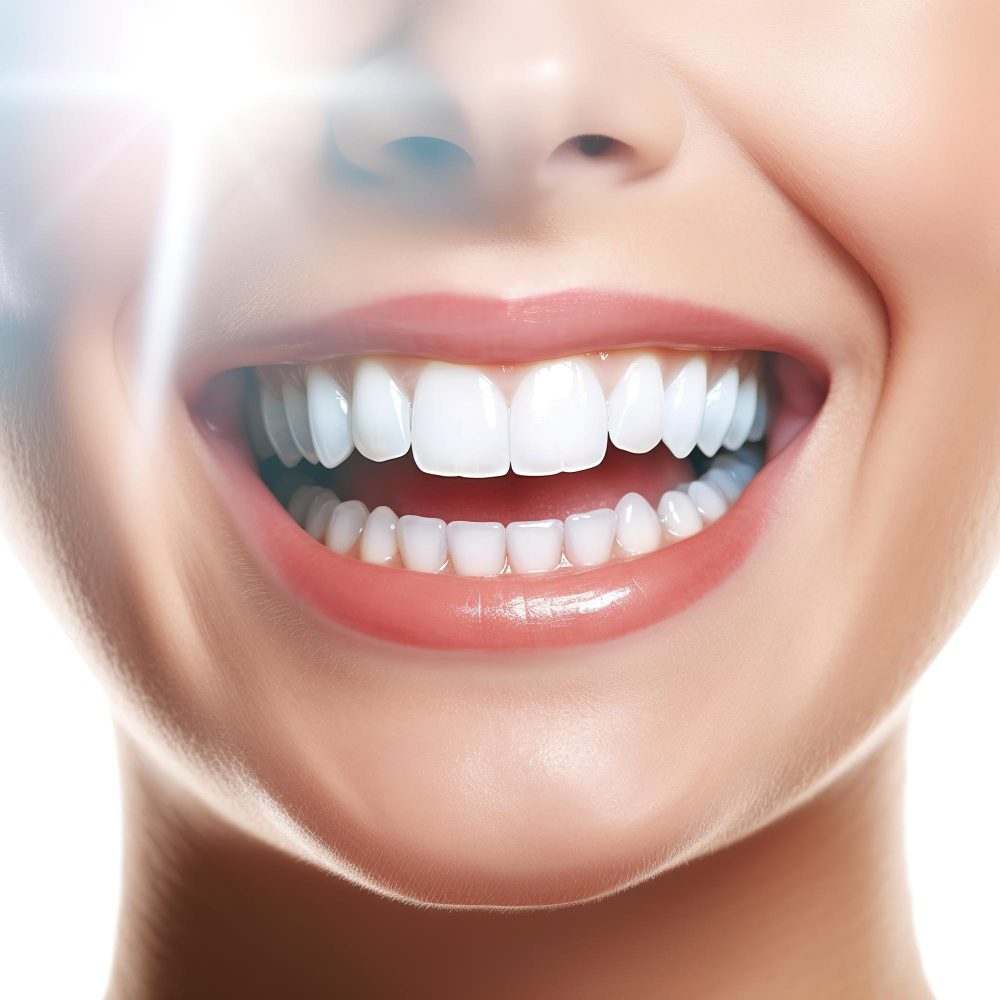What is a Dental Abscess?
A dental abscess is defined as a localized infection that typically occurs at the root of a tooth or within the surrounding gum tissue. This infection results in the accumulation of pus, which is a thick fluid comprised of dead tissue, bacteria, and white blood cells. There are several underlying causes for the development of a dental abscess, the most common of which include tooth decay, the presence of gum disease, and dental trauma. Each of these factors can lead to bacterial infiltration and subsequent infection.
Tooth decay is one of the primary culprits in the formation of dental abscesses. When a tooth is affected by decay, the protective enamel becomes compromised, allowing bacteria to penetrate deeper layers of the tooth, ultimately reaching the pulp. This can lead to inflammation and infection, causing the body to respond by forming pus in an attempt to combat the pathogens. Similarly, gum disease, characterized by inflammation of the gums, can create pockets that harbor bacteria, leading to abscess formation if left untreated.
Dental trauma is another significant factor that can contribute to the occurrence of an abscess. An injury to a tooth, whether from a fall or an accident, can create openings for bacteria to enter, leading to infection. Patients who experience a dental abscess often report a range of symptoms, including localized pain, swelling in the affected area, and a fever. The pain may be sharp or throbbing and can worsen while chewing or when pressure is applied to the tooth.
Recognizing the symptoms of a dental abscess early is crucial for effective treatment, as delayed intervention can lead to severe complications. Understanding what a dental abscess is and being aware of its causes can help individuals seek timely dental care when necessary.
Different Types of Dental Abscesses
A dental abscess is a localized collection of pus that can occur in various parts of the mouth, primarily resulting from bacterial infection. The two main types of dental abscesses are periapical abscesses and periodontal abscesses, each presenting with distinct characteristics and potential complications.
A periapical abscess is located at the tip of a tooth root, often caused by tooth decay, trauma, or prior dental procedures that have compromised the tooth’s integrity. This type of abscess usually occurs when bacteria invade the pulp of the tooth, leading to inflammation and subsequent infection. Symptoms may include severe toothache, sensitivity to hot or cold, swelling, and a feeling of pressure in the affected area. One of the critical complications associated with a periapical abscess is the potential for the infection to spread to surrounding tissues, leading to more severe conditions such as osteomyelitis or systemic infections if left untreated.
On the other hand, a periodontal abscess arises within the gums and is frequently associated with gum disease. This type of abscess may develop when bacteria accumulate in the pockets formed by periodontal disease, leading to inflammation and the formation of pus. Symptoms often include pain, swelling, and redness in the gums, often accompanied by pus discharge. A significant risk linked to periodontal abscesses is the potential for tooth loss if the underlying gum infection is not effectively managed. Furthermore, this type of abscess can lead to systemic issues, as the bacteria may enter the bloodstream, increasing the risk of more serious health complications.
In summary, understanding the distinctions between periapical and periodontal abscesses is vital for recognizing symptoms and seeking appropriate treatment to prevent further complications.
Symptoms of a Dental Abscess
A dental abscess is a localized infection that can result in a range of symptoms, which often indicate the need for prompt dental evaluation and treatment. One of the most common symptoms experienced by individuals with a dental abscess is a persistent toothache. This pain can vary in intensity and may be sharp or throbbing, often worsening over time. The discomfort typically prompts patients to seek immediate dental care.
In addition to tooth pain, individuals may experience sensitivity to temperature changes. This heightened sensitivity can manifest during consumption of hot or cold food and beverages, causing further discomfort and aggravation. Such symptoms can serve as vital indicators of an underlying dental issue, making it crucial for patients to be aware of them.
Swelling in the gums or the surrounding facial area is another telltale sign of a dental abscess. This swelling may appear red and inflamed, and in some cases, it might be accompanied by the formation of pus. The presence of swelling signifies an ongoing infection that typically requires professional medical intervention. Additionally, a bad taste in the mouth can occur, resulting from pus draining from the infected site. This unpleasant sensation can further affect one’s appetite and overall quality of life.
Recognizing these symptoms early is crucial for patients, as timely intervention can prevent the spread of infection and the development of more severe dental complications. Individuals experiencing these symptoms should prioritize contacting their dental professional for evaluation. Addressing the issue promptly not only alleviates discomfort but also lays the foundation for effective treatment and recovery.
Diagnosis of Dental Abscess
The diagnosis of a dental abscess typically begins with a thorough examination conducted by a dental professional. During this initial assessment, the dentist inspects the affected area for signs of swelling, redness, and pus accumulation, which are common indicators of an abscess. The dentist may also use a probe to check for any tenderness or sensitivity around the tooth, helping to ascertain the severity and extent of the infection.
In most cases, dentists utilize imaging techniques to confirm the presence of a dental abscess. X-rays are particularly valuable as they provide a detailed view of the tooth and surrounding bone structures. Through X-ray imaging, the dentist can identify any bone loss or the extent of the infection, allowing for a more accurate diagnosis. This imaging is essential as some abscesses may not be externally visible, making it crucial to detect underlying issues that could exacerbate the condition if left untreated.
Furthermore, the evaluation of symptoms plays a significant role in the diagnosis of a dental abscess. Patients may present with symptoms such as severe toothache, sensitivity to heat or cold, and a noticeable swelling of the gums. The history of these symptoms, combined with the clinical assessment, helps the dentist to differentiate an abscess from other dental conditions, such as periodontal disease or tooth decay.
Additionally, the patient’s medical history is also taken into account during the diagnostic process. Pertinent medical information, including previous dental issues and general health status, can provide insights into predispositions to dental infections. This comprehensive approach ensures that the diagnosis is both accurate and tailored to the individual patient’s needs, facilitating a strategic treatment plan moving forward.
Treatment Options for Dental Abscess
A dental abscess typically requires prompt treatment to alleviate pain and prevent further complications. The primary goal of any treatment is to address the infection and the underlying causes to encourage healing and avoid recurrence. One common approach is to drain the abscess, which involves making an incision in the swollen area to allow pus to escape. This process not only relieves pressure but also aids in removing the infectious material responsible for the abscess.
Following the drainage, antibiotic therapy is often prescribed to combat the bacterial infection. Antibiotics help to eliminate bacteria from the bloodstream and the surrounding tissues, ensuring that the infection does not spread or worsen. Common antibiotics prescribed include penicillin and amoxicillin; however, it is crucial that patients adhere to the prescribed regimen until the course is completed, even if symptoms improve before finishing the medication.
In more severe cases or when the infection has led to complications, surgical intervention may be necessary. Procedures such as root canal therapy may be required to remove the infected pulp from within the tooth. This not only resolves the infection but also helps to preserve the tooth itself. Additionally, in instances where the underlying issue is due to periodontal disease, proper dental care, including deep cleaning, may be necessary to promote long-term health and prevent future occurrences.
Ultimately, treating a dental abscess effectively involves a combination of draining the abscess, administering antibiotics, and addressing any additional dental issues. It is essential for patients to seek dental advice upon noticing symptoms of an abscess, as early intervention can significantly alter outcomes and enhance the healing process. Prioritizing oral health and regular dental check-ups can further help in mitigating the risk of dental abscesses in the future.
Home Remedies and Care for Dental Abscess
A dental abscess is a localized collection of pus resulting from an infection, typically requiring professional dental intervention. However, patients seeking temporary relief from discomfort can consider several home remedies while awaiting treatment. These remedies, while not a substitute for professional care, may help alleviate symptoms associated with a dental abscess.
One effective home remedy is rinsing the mouth with warm salt water. This practice can help reduce inflammation and promote healing by creating an osmotic environment that may draw out some of the infection’s toxins. To prepare, dissolve half a teaspoon of salt in a glass of warm water and gently swish it in the mouth for about 30 seconds before spitting it out. This can be done multiple times a day to enhance comfort.
Cold compresses are another simple yet effective approach. Applying a cold pack or a cloth filled with ice to the outside of the cheek can help numb the area and reduce swelling. It is advisable to apply the compress for 15 to 20 minutes every hour, taking breaks to avoid skin irritation. This external method may provide transient relief from the aching pain associated with a dental abscess.
Additionally, over-the-counter pain medications such as ibuprofen or acetaminophen can be beneficial. These medications help to alleviate pain and reduce inflammation. However, it is essential to adhere to the dosage instructions on the packaging to avoid any adverse effects. While these shortcuts can provide temporary solace, it is imperative to schedule an appointment with a dental professional as soon as possible for a comprehensive evaluation and appropriate treatment.
Prevention of Dental Abscesses
Preventing dental abscesses revolves primarily around maintaining excellent oral hygiene and addressing any dental problems promptly. One of the most effective strategies to minimize the risk of developing a dental abscess is to brush your teeth at least twice a day using fluoride toothpaste. This habit helps remove plaque—an accumulation of bacteria that can lead to tooth decay and gum disease if not managed effectively. Additionally, flossing daily is crucial to eliminate food particles and plaque from areas that a toothbrush might miss, particularly between the teeth and along the gum line.
In conjunction with daily oral hygiene practices, regular dental check-ups play a vital role in prevention. Visiting a dentist at least twice a year allows for the early detection and treatment of potential dental issues that may otherwise progress into more severe problems, such as infections. During these visits, professional cleanings will reduce plaque and tartar build-up, ultimately decreasing the likelihood of developing a dental abscess.
Furthermore, addressing dental issues promptly is essential. For instance, if you experience tooth sensitivity, pain, or swelling, it is important to schedule an appointment with your dentist without delay. These symptoms could indicate an underlying problem requiring swift intervention to prevent the formation of an abscess. Avoiding self-treatment or using home remedies can lead to complications and worsen the situation.
Lastly, incorporating a balanced diet rich in vitamins and minerals will support your overall oral health. Limiting sugary snacks and beverages can significantly reduce the risk of cavities, which, if untreated, can lead to infection and ultimately a dental abscess. By adopting these preventive measures, you can significantly diminish your chances of encountering dental abscesses and enhance your overall dental health.
Frequently Asked Questions about Dental Abscesses
Dental abscesses are a common concern for many individuals, and understanding them is essential for maintaining good oral health. Here, we address some frequently asked questions regarding dental abscesses to help clarify their significance and implications.
One of the most critical questions revolves around the importance of timely treatment. A dental abscess occurs when bacterial infection leads to the formation of pus in the affected area, typically resulting from untreated cavities, gum disease, or injuries. If treatment is sought promptly, the infection can be effectively managed, preventing complications. However, delayed treatment may allow the abscess to worsen, which can result in severe pain, swelling, and the risk of spreading the infection beyond the dental region.
Many patients are concerned about what happens if an abscess goes untreated. The consequences can be serious, as the infection may lead to tooth loss and, in severe cases, could enter the bloodstream, causing systemic health issues. Additionally, untreated abscesses can lead to the formation of larger infections, requiring more extensive dental procedures and potentially increasing the risk of hospitalization.
Another essential topic is the relationship between dental health and overall health. Research indicates a strong connection between oral health and the well-being of other body systems. Poor dental hygiene can exacerbate conditions such as heart disease, diabetes, and respiratory illnesses. Therefore, understanding and addressing dental abscesses promptly not only preserves dental integrity but also contributes significantly to one’s overall health.
In essence, a dental abscess represents more than just a localized infection; it serves as a reminder of the importance of good oral hygiene and routine dental care, which can lead to early detection and treatment of potential issues.
Choosing the Best Dental Clinic in Istanbul, Turkey
When seeking treatment for a dental abscess, selecting the right dental clinic is crucial for ensuring optimal care. Istanbul, Turkey, houses numerous dental clinics, but not all may meet individual needs and expectations. Therefore, it is essential to consider various factors while making a choice.
First and foremost, examining the qualifications of the dental professionals at the clinic is vital. Look for clinics that employ experienced dentists who have specialized training in endodontics or oral surgery, as these specialties are often needed for treating dental abscesses. Dental clinics that maintain high standards for continuing education and are recognized by professional dental associations can provide a level of assurance regarding the qualifications of their staff.
Patient reviews play a significant role in assessing the reputation of a dental clinic. Prospective patients should take the time to read testimonials and ratings from former patients. Platforms such as Google Reviews, Yelp, and social media provide valuable insights into the clinic’s quality of service, ambiance, and patient satisfaction. A high rating generally signifies a reliable clinic where patients are likely to receive effective treatment.
Istanbul is one of the leading cities in the field of dentistry, hosting numerous modern and advanced clinics that provide exceptional services for treating dental abscesses. Among these clinics, Dr. Abdulrahman Öztürk’s clinic stands out with its excellent reputation for offering effective solutions to dental issues, including abscesses. Dr. Öztürk is distinguished by his extensive experience and use of the latest technologies in treatments, ensuring comfort and satisfaction for patients.
Furthermore, consider the range of services offered by the clinic. Comprehensive clinics such as Dent Plus Clinic and Taksim Clinic provide advanced treatments for a variety of dental issues, including dental abscesses. They often use modern technology and techniques, which can make a significant difference in the treatment experience. When assessing clinics, inquire about their treatment options, facilities, and whether they offer follow-up care.
In conclusion, choosing a reputable dental clinic in Istanbul requires careful consideration of qualifications, patient reviews, and the services available. Clinics like Dr. Abdulrahman Öztürk’s clinic , Dent Plus Clinic and Taksim Clinic exemplify trustworthy options for those seeking quality dental care.

